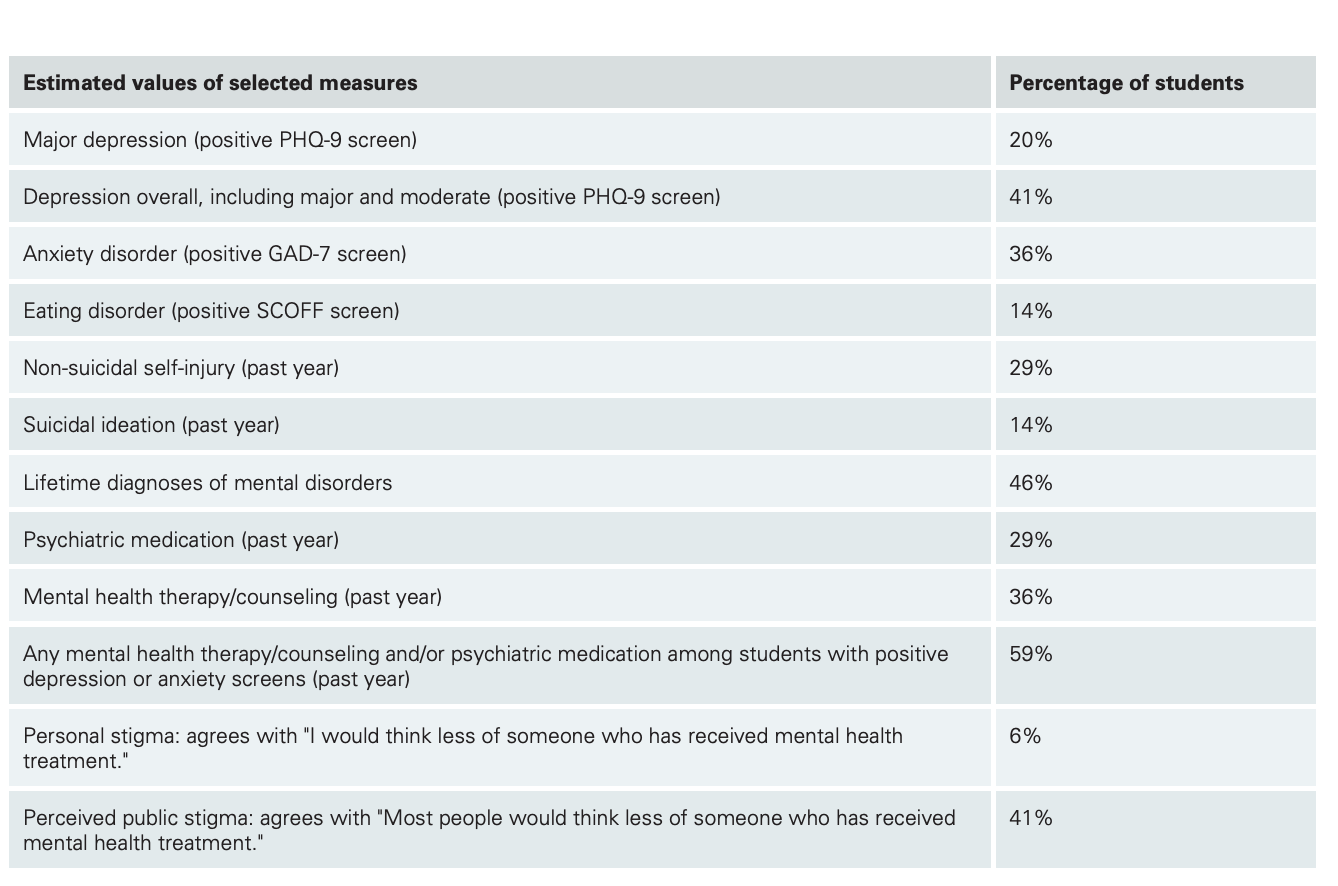It’s never enough: When the culture of achievement turns toxic—and what we can do about it by Jennifer Brainy Wallace
Posted in August 2023
What do you think is the worst problem facing higher education?
Generative AI? College Costs and Student Debt? Persistently low graduation rates?
For many of us in higher education, the student mental health crisis will top any list of challenges.
See the percentages below from the 2022-2023 Healthy Minds Study, a national survey of college students. According to these data, one in five students faced severe depression, while four in 10 reported moderate or severe depression. Over a third of students reported suffering from an anxiety disorder.
Overall, more than six in 10 students met criteria for one or more mental health problems. Most alarmingly, the proportion of students facing mental health challenges has increased by nearly 50 percent since 2013.

The causes of our students’ mental health crisis are multifactorial. The mental well-being of students is a complex issue. Terrible problem. Any effective university response to the student mental health crisis will need to be sustainable, creative and robust.
One potential clue to understanding why so many college students struggle with mental health challenges can be found in Jennifer Brainey Wallace’s excellent new book, It’s never enough.
After reading It’s never enough, it’s hard to avoid the conclusion that today’s students are likely to arrive pre-stressed. The rigors of college life seem tame compared to the pressure cooker that is life for high school students hoping to get into a top-ranked institution of higher learning.
It’s never enough has three goals. The first is to explain the growth of a culture of achievement within the subset of zip codes populated by highly educated parents. The book’s second goal is to document the corrosive effects on adolescent mental health of over-scheduling, over-parenting, and increased academic and extracurricular competition. And finally, It’s never enough seeks to offer some solutions to parents who want to support their children’s success while prioritizing their well-being.
Why has the culture of adolescent achievement become so much more intense among the professional class? Wallace suggests that there are no bad actors at work. Parents decide to enrich and invest in their children because they understand how precarious economic security has become. Not wanting their children to live paycheck to paycheck into adulthood, parents see their work as preparing their offspring for the relative security of a professional career.
Parents investing more time, money and attention in their children is not a negative trend. The problem, like It’s never enough details through data and stories, is that parental aspirations have resulted in unproductive pressures for their offspring. There are not enough places at prestigious colleges and universities to admit every qualified applicant.
In mixing the security of a future professional career with success in the college admissions game, parents (and their children) have placed themselves in an impossible bind. Places at the nation’s top colleges and universities have grown slightly as the pool of applicants swells. In 1987 (my freshman year), the acceptance rate for the most selective colleges and universities was around 20 percent. Today, many universities accept fewer than one in 10 applicants.
While reading It’s never enough may help parents recognize the causes and effects of the stress their teens are living under, the book is less successful in offering solutions. As a parent who has tried to deal with my children’s high school stress, I know that even the calmest of fathers and mothers can accomplish little. Pressure comes mainly from peers.
One solution is for parents to choose not to live in a Super Zip, a zip code where educational attainment and household income are in the top 5 percent. It’s never enough raises the intriguing possibility that parents are doing their children a disservice by making sacrifices to afford an expensive home in a community with a top-ranked school system.
It’s never enough would be an excellent book for any incoming freshman to read and discuss, with the idea that universities can serve as a counterweight to the toxic culture of achievement in which so many freshmen navigate.
If you’re concerned about the mental wellbeing of students – and who isn’t these days – then read and talk about It’s never enough can help clarify and expand this conversation on campus.
What are you reading?

